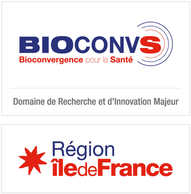The first edition of the Double•Science festival took place from May 26th to May 28th, 2023, at Ground Control (Paris 75012). The Café des Sciences, L’Exploratoire, and the French Society of Physics were the co-organizers of this first edition of the festival. May 26th was dedicated to professionals, with workshops designed for this purpose. The festival was also accompanied by a curation period around the theme of science at Ground Control throughout the months of May and June 2023.


The main objective of this festival is to make science a true culture in its own right.
The DIM decided to sponsor and create a wall of citizen expression during the festival: it is a wall or large display on which one or more questions are asked or a subject is proposed, inviting the public to respond with post-it notes, drawings, or other written contributions. This allows for the collection of ideas, questions, and suggestions from a large number of people over a given period of time. In concrete terms, it is a massive creative brainstorming session.
The public was invited to reflect on 4 axes of consideration, including:
- Their level of trust in different media sources regarding the sharing of knowledge in health.
- What “Science and Health” means to them through a word cloud.
- What science means to them through drawing.
- How scientists could improve their way of sharing knowledge.

The activities sparked many discussions among the participants. In some cases, the public would return to read the advice that had been added.
Béatrice, the mediator, was able to gather a lot of feedback from visitors, ask questions to the public to learn more about them, and respond to their questions. Her role ultimately became more about encouraging conversations and debates than inviting people to participate in the wall.
The objectives of the DIM BioConvS for this initiative were to explore this type of mediation and understand the public’s relationship with science. The type of mediation implemented generated a lot of interest and invited discussion and debate among and with the public. The exchanges were numerous, in-depth, and enriching. The setup was indeed useful in the context of a science mediation action. This success is linked to the public’s great curiosity and their attraction to this type of activity.



